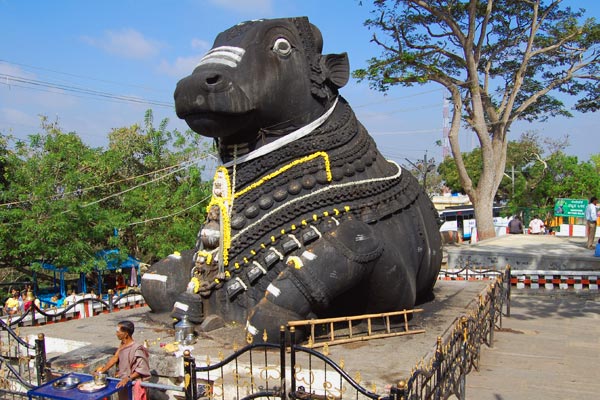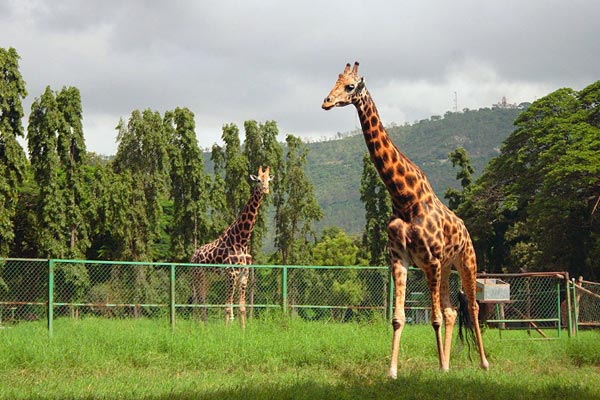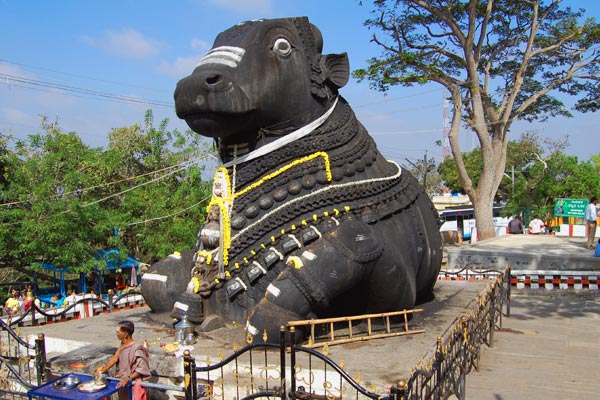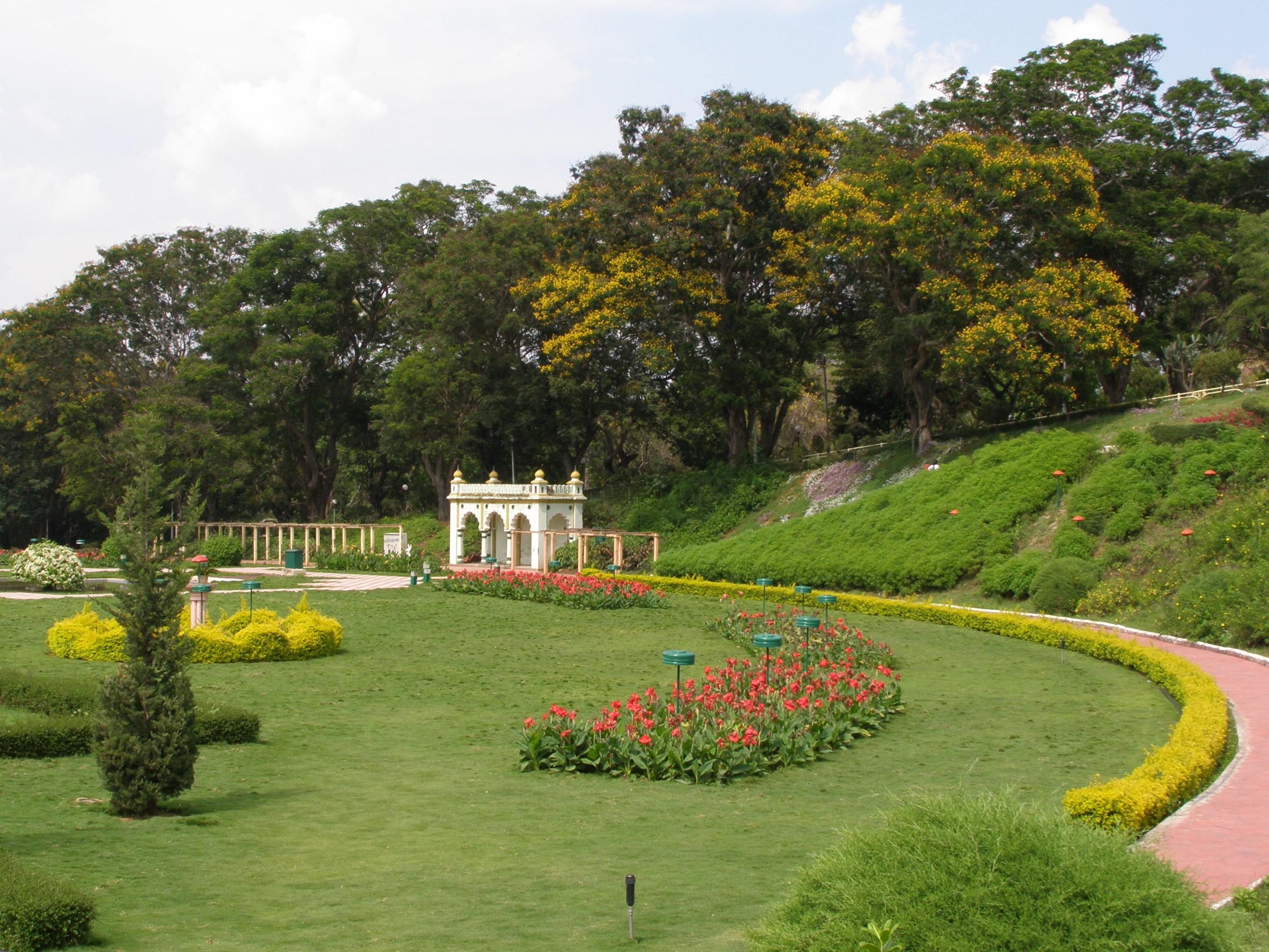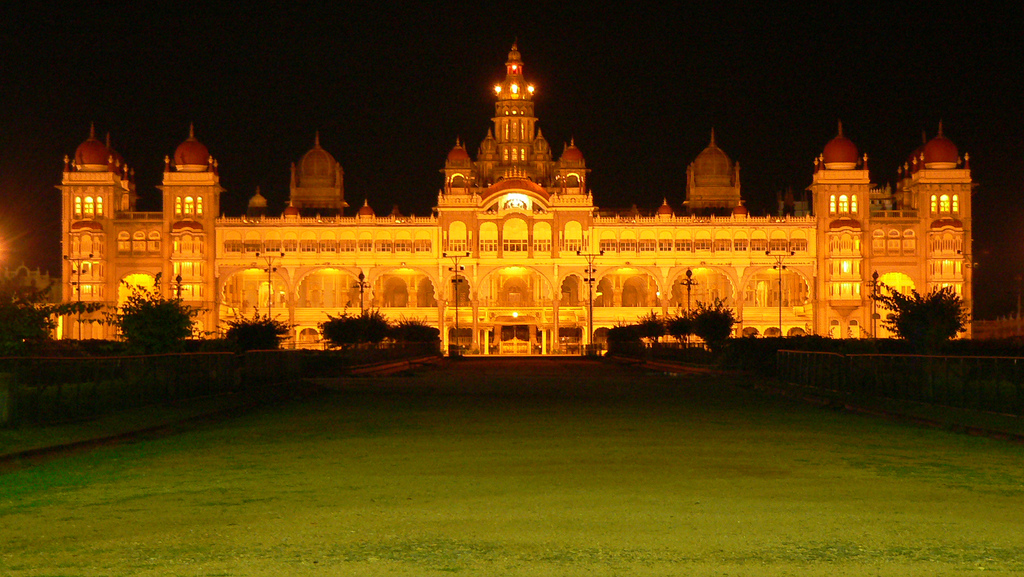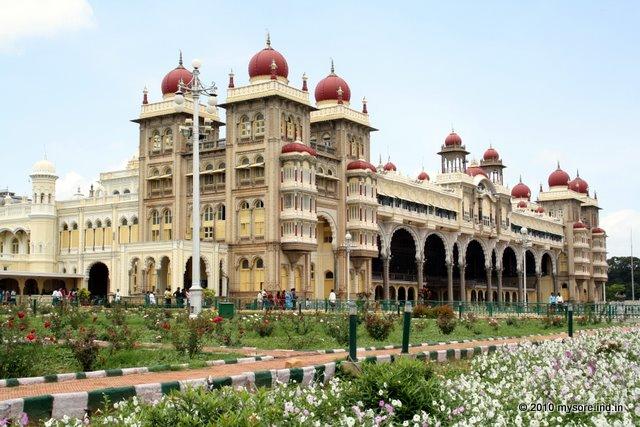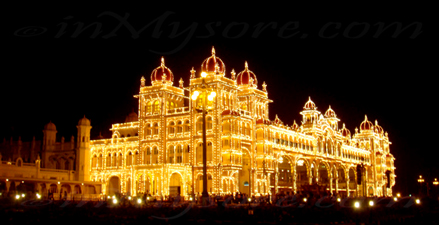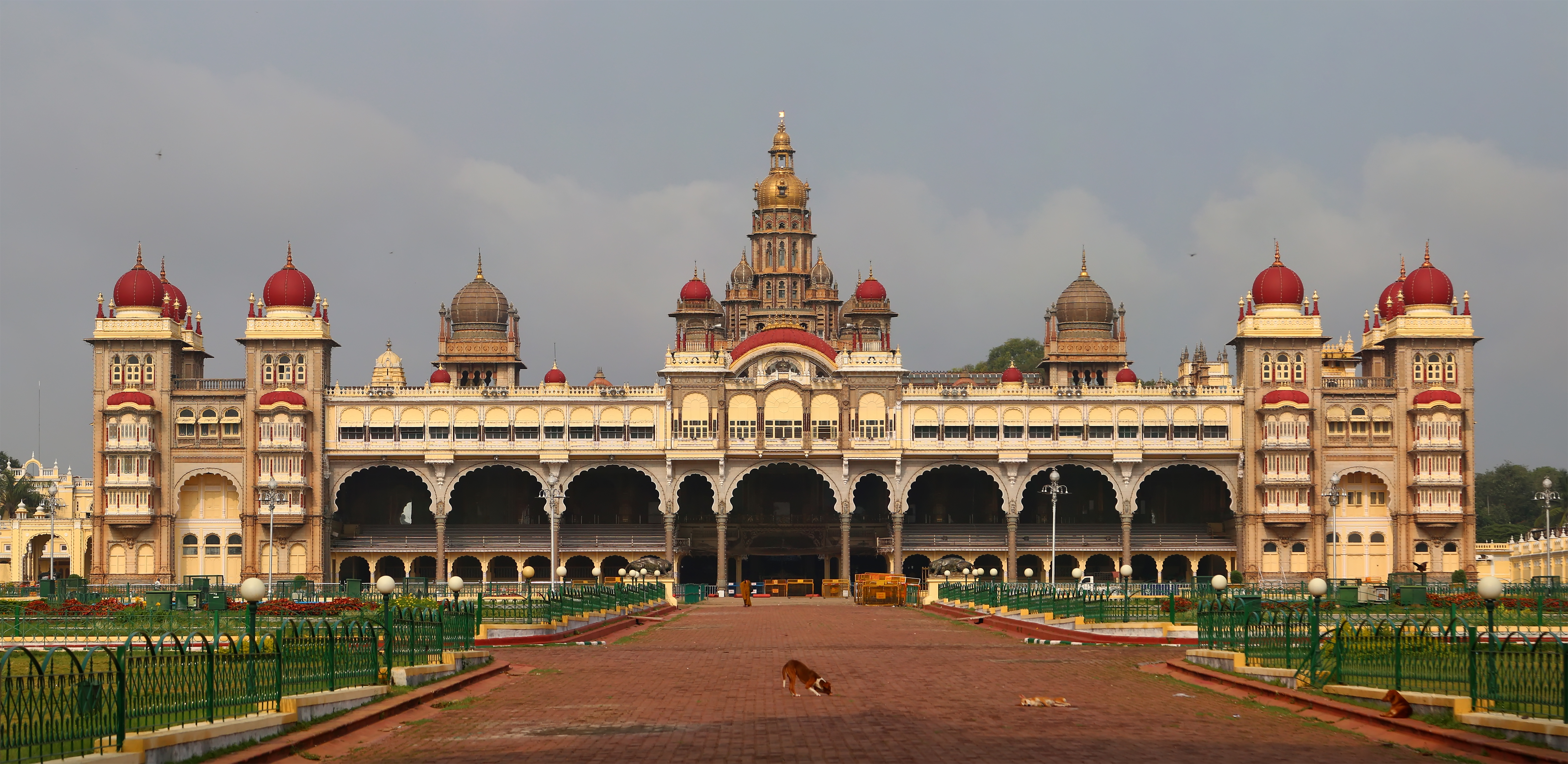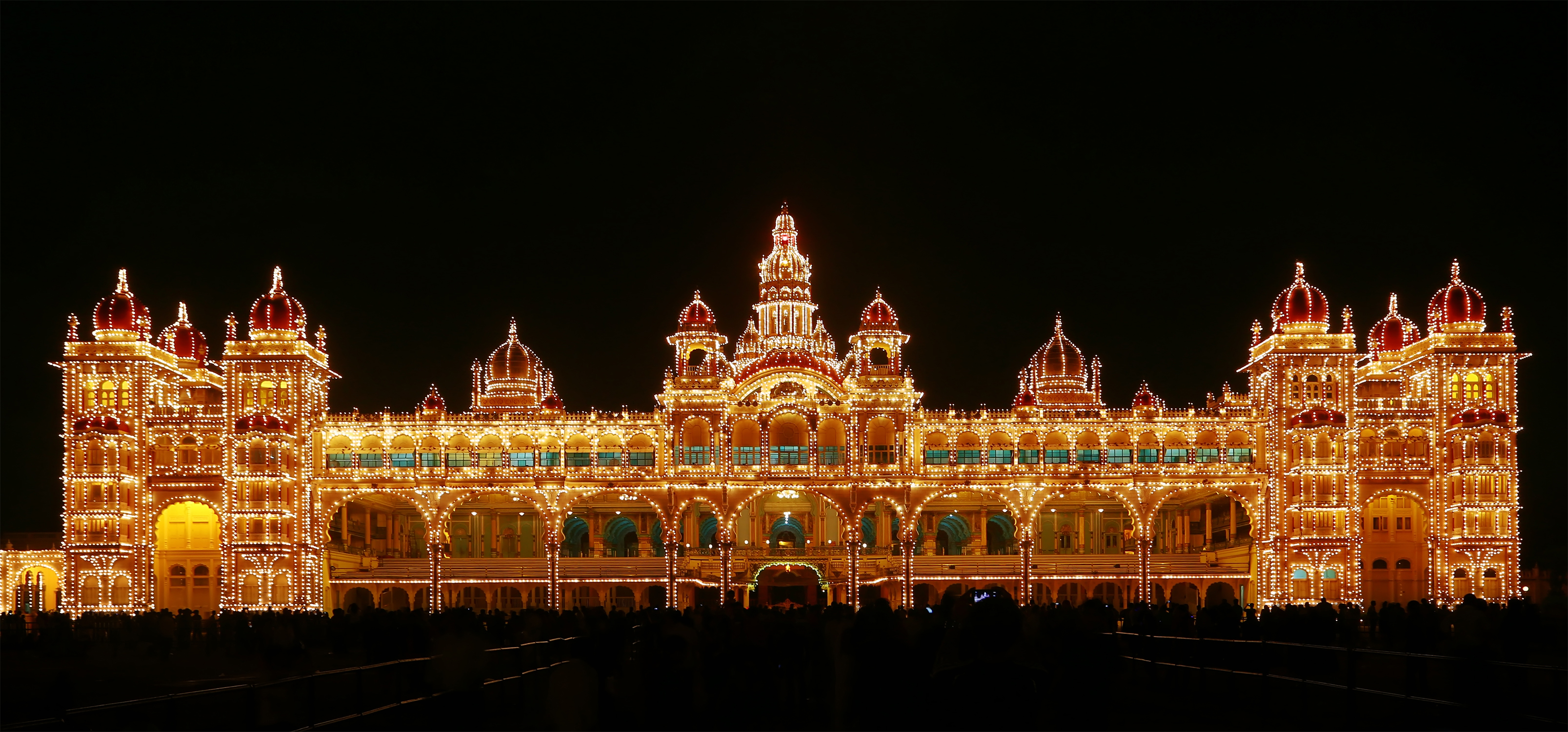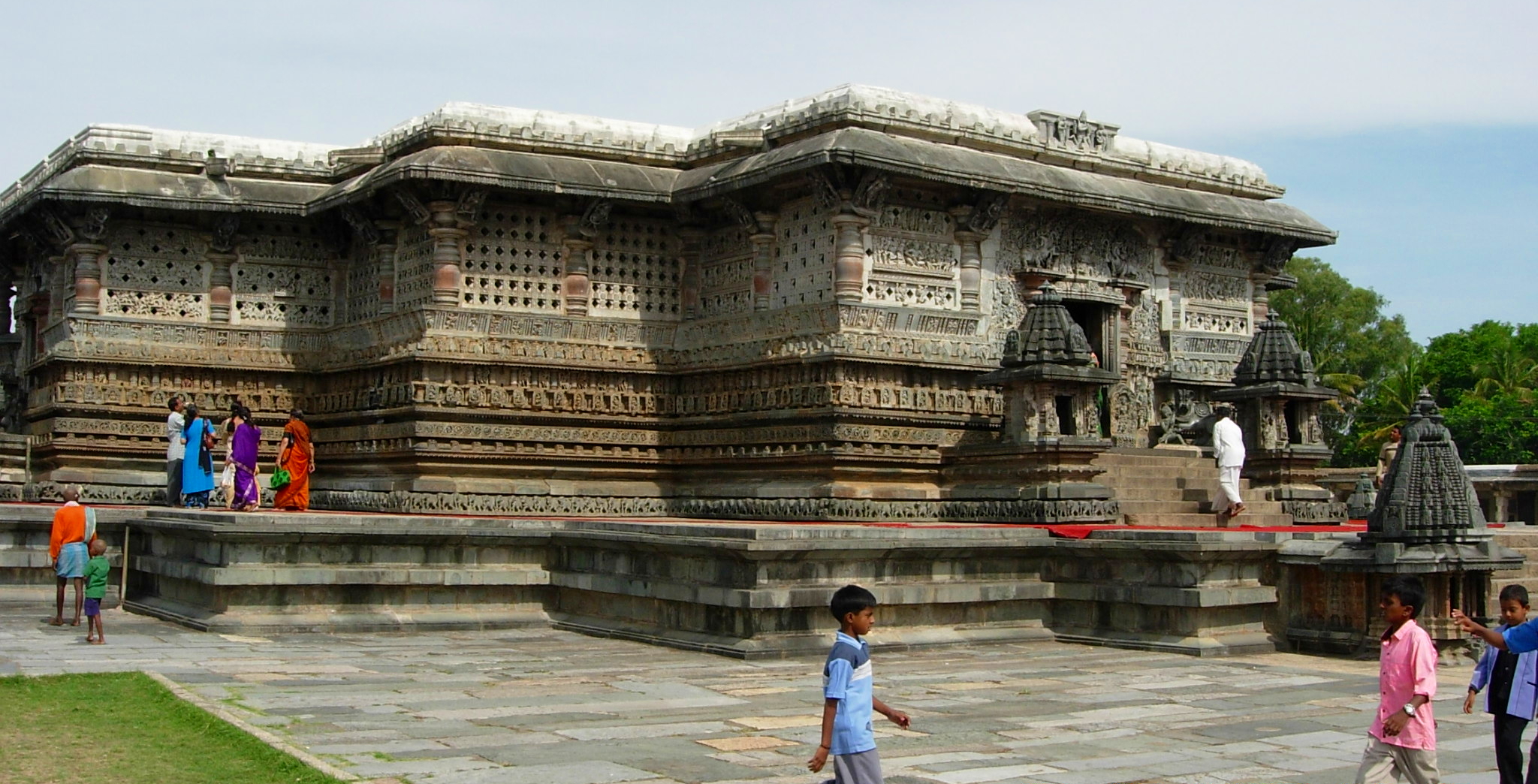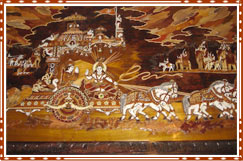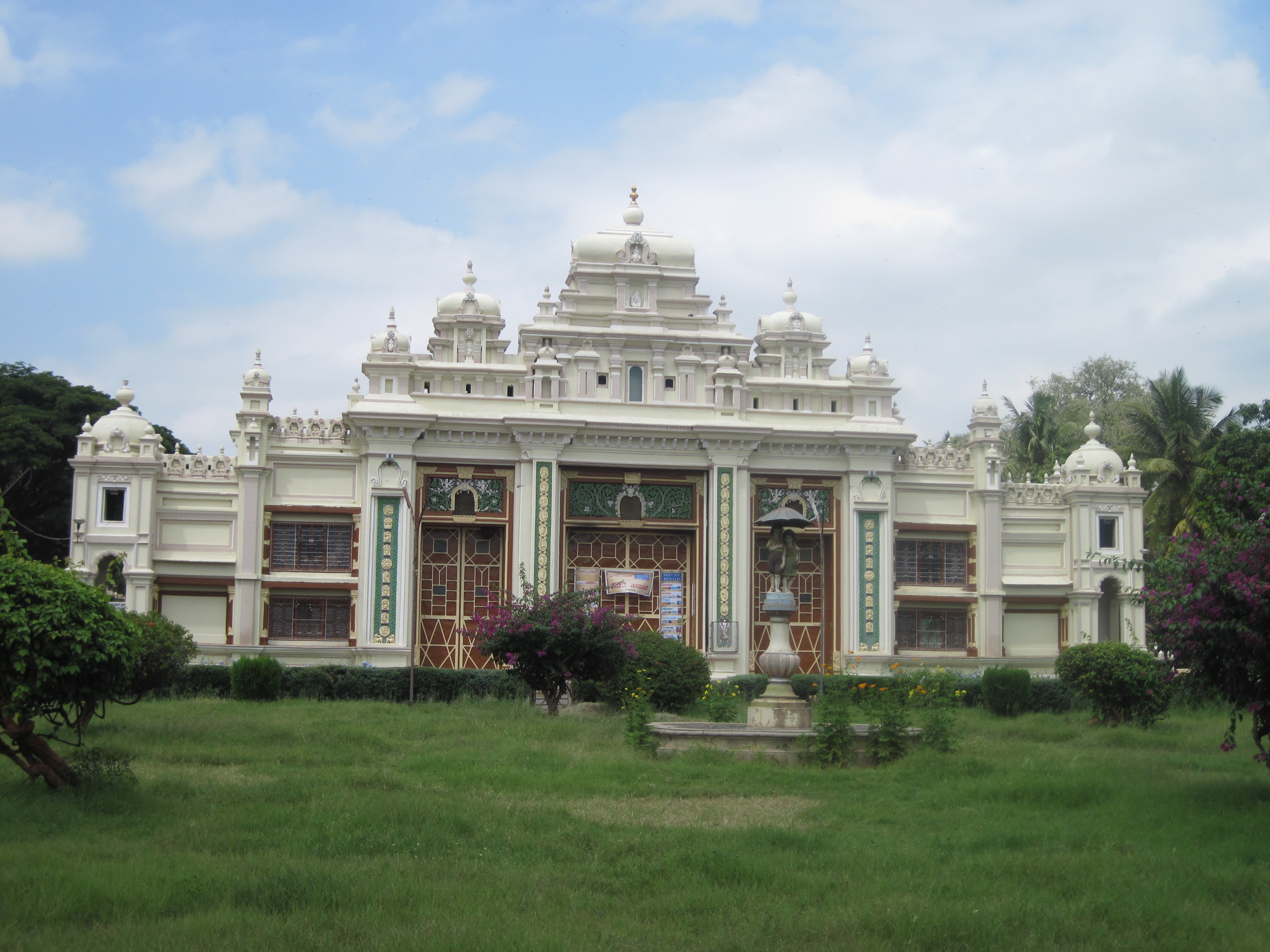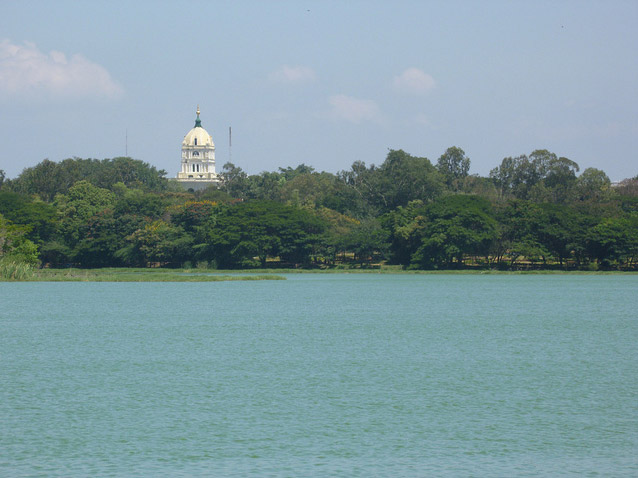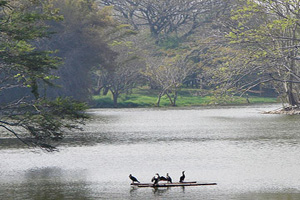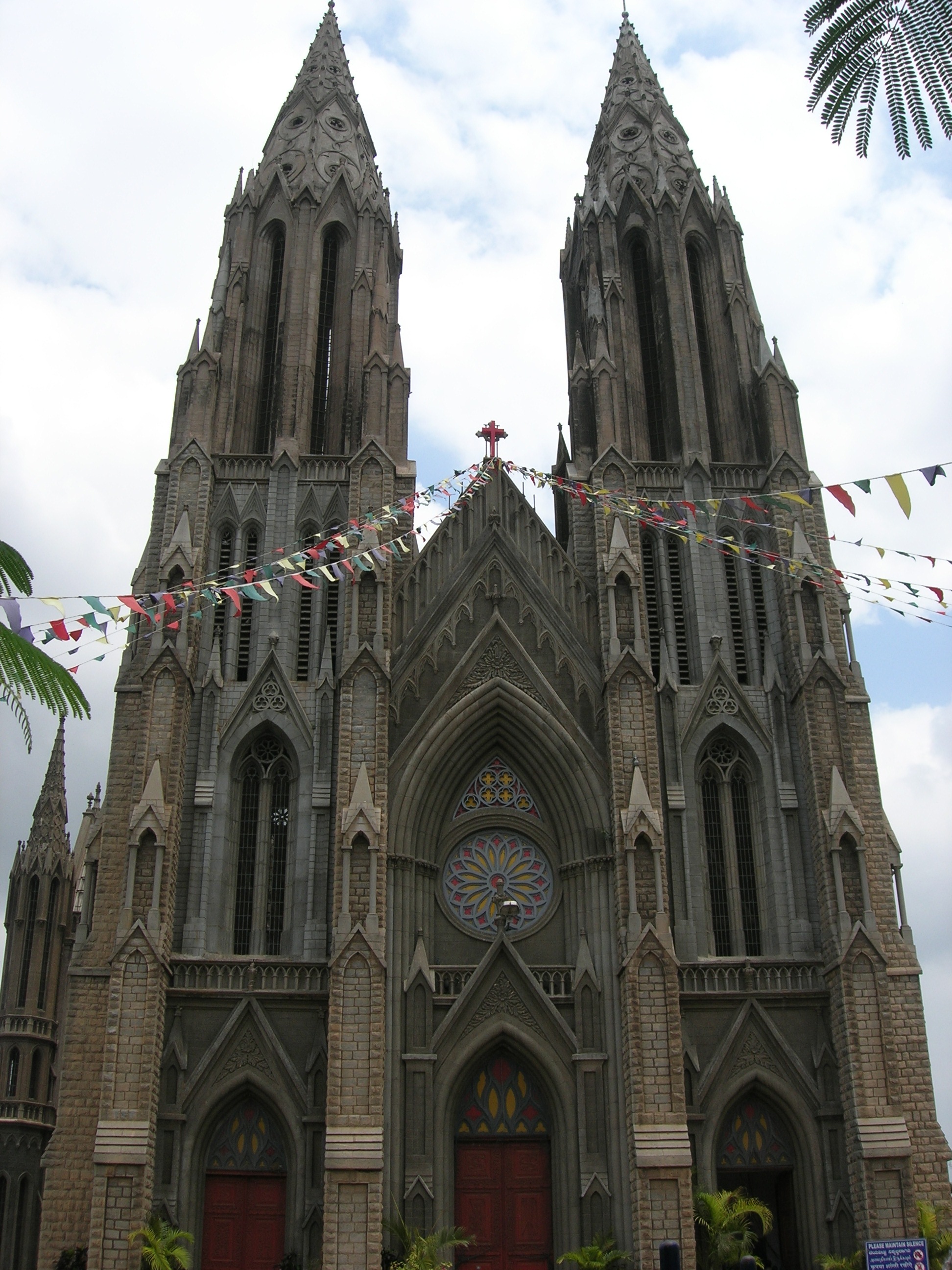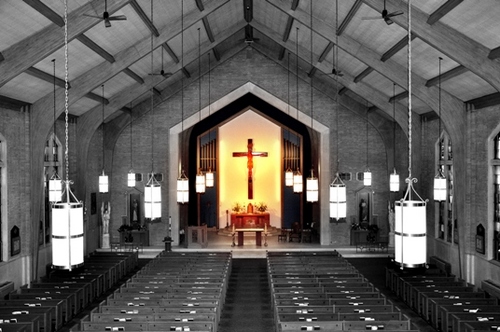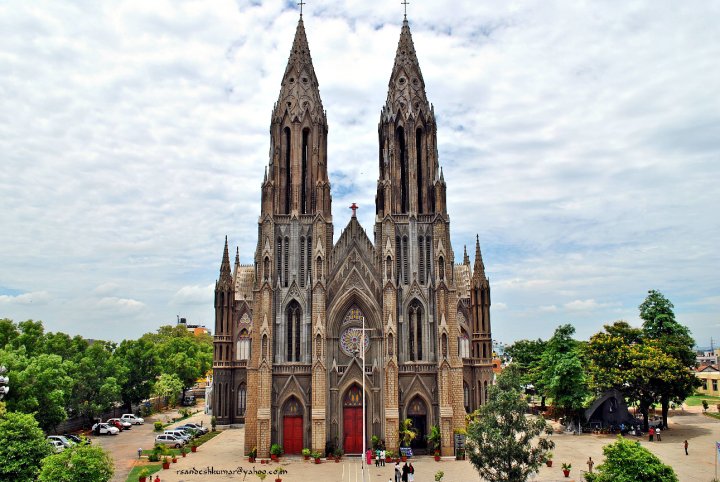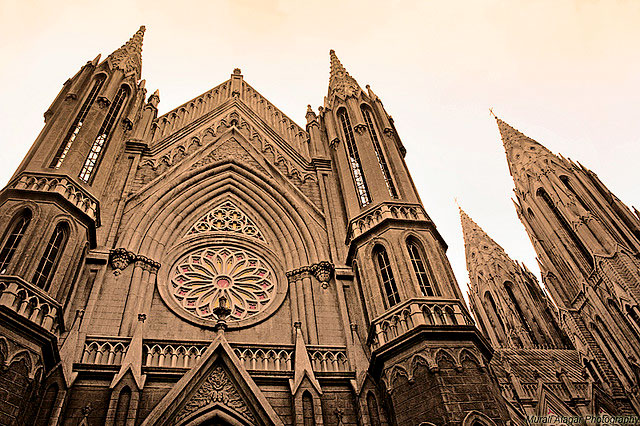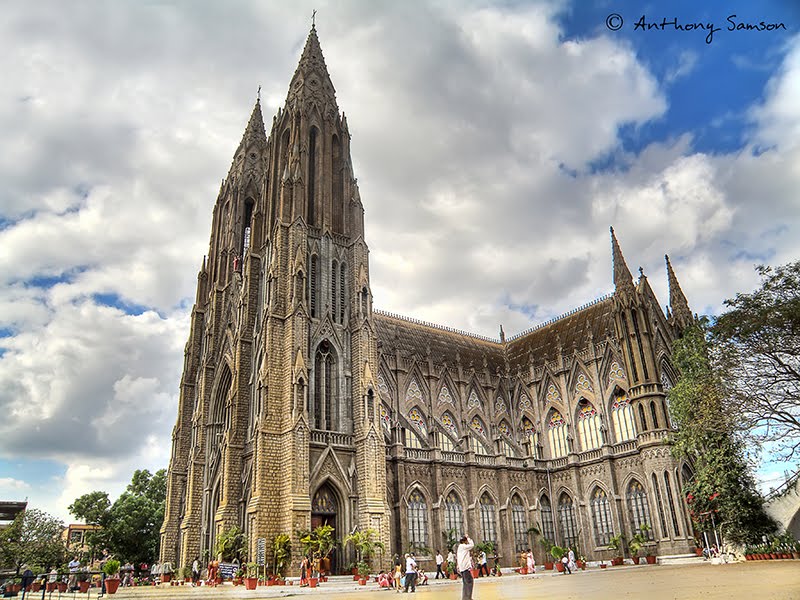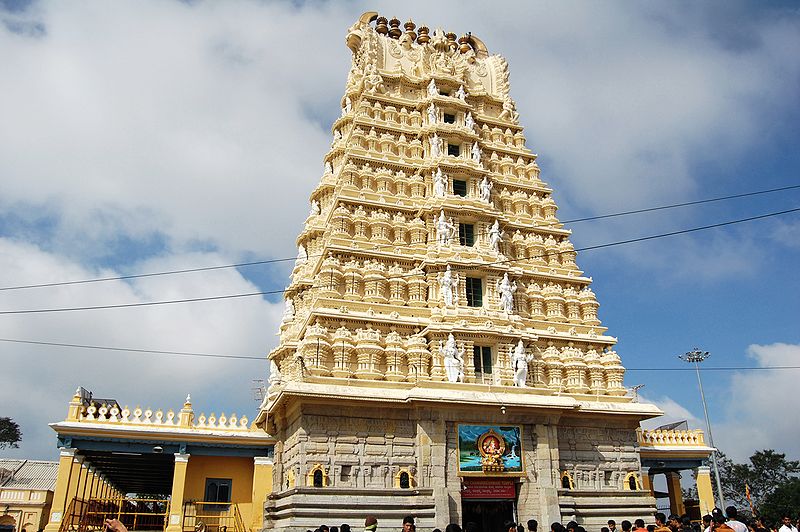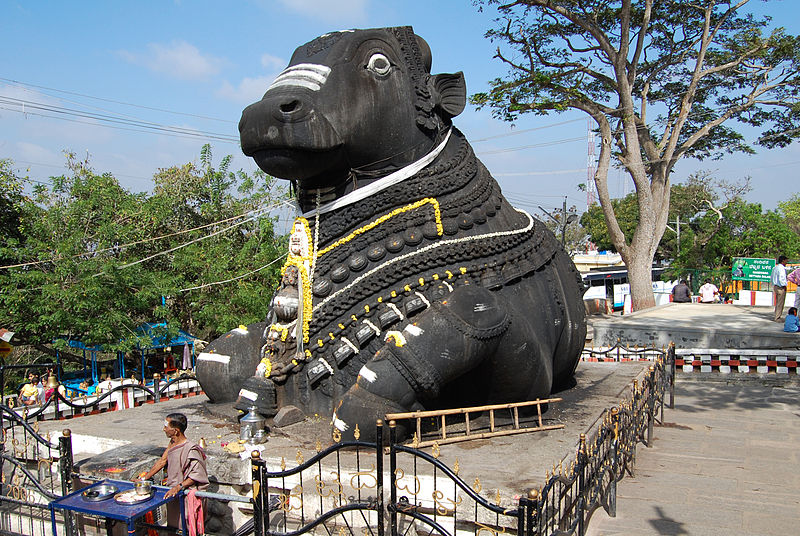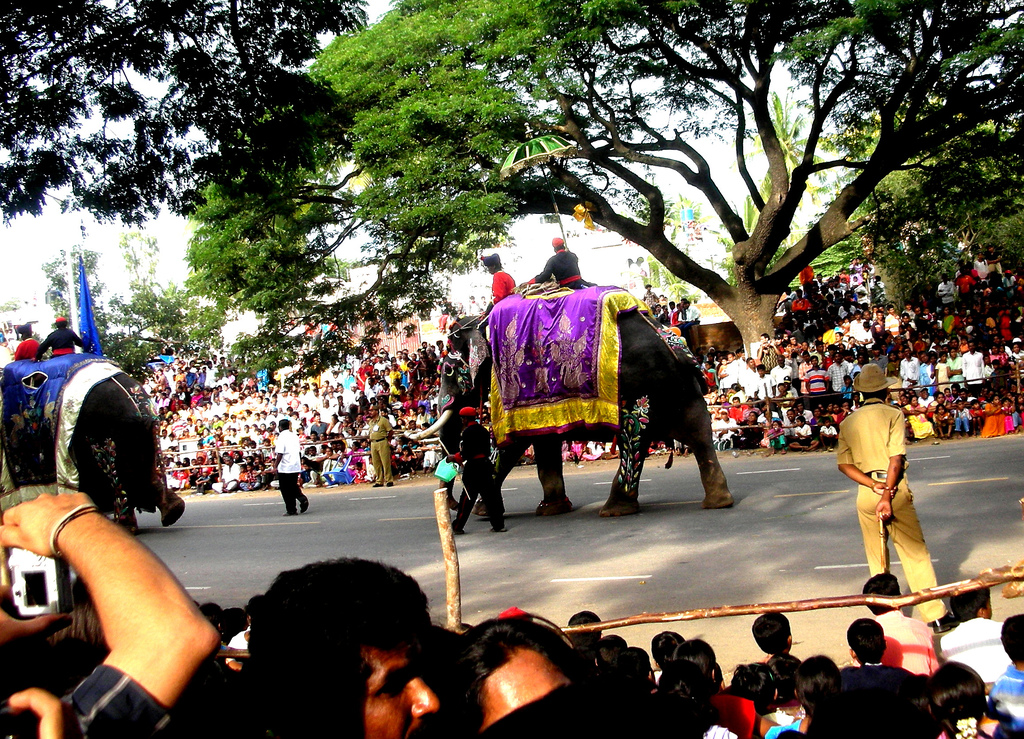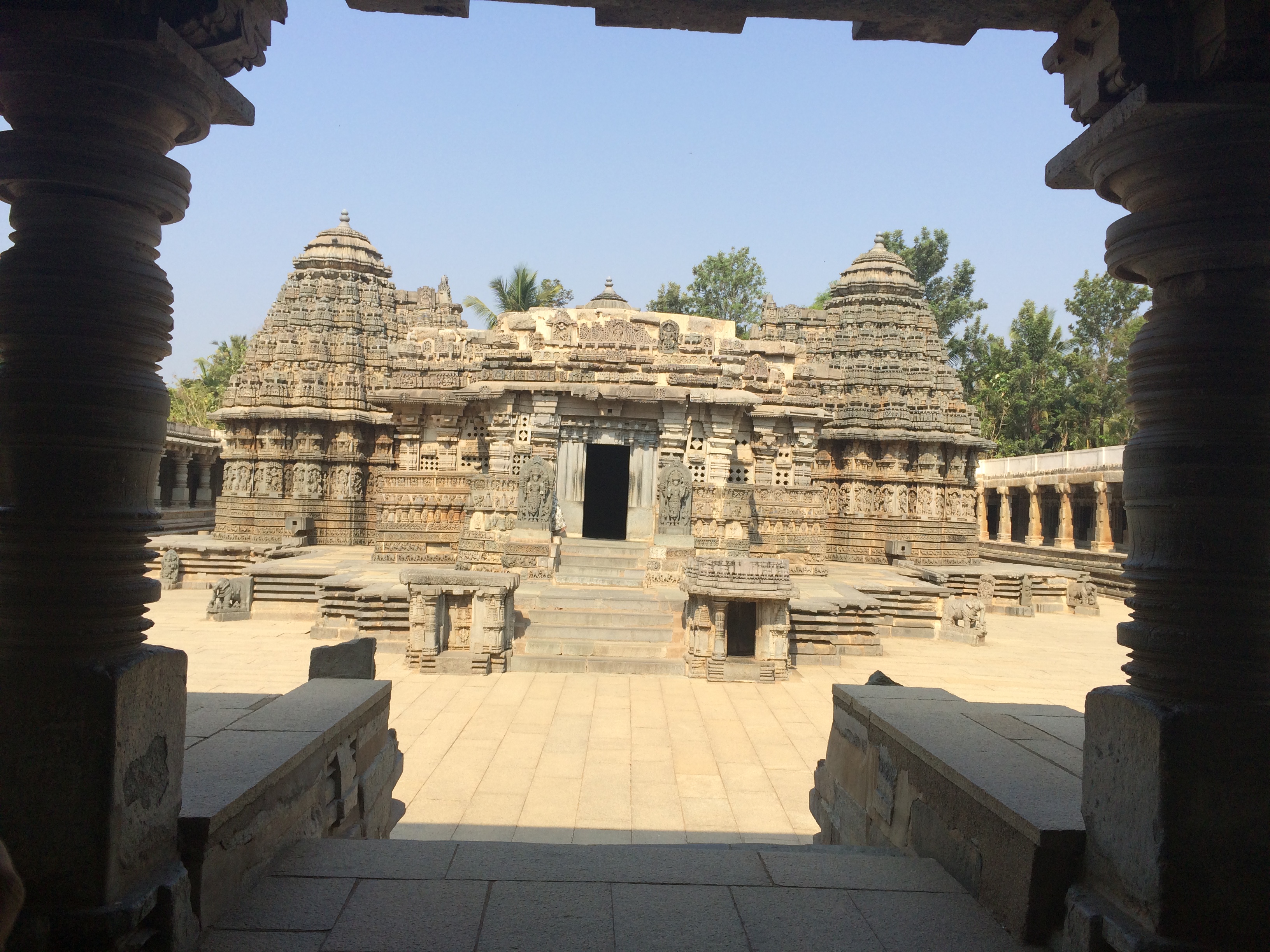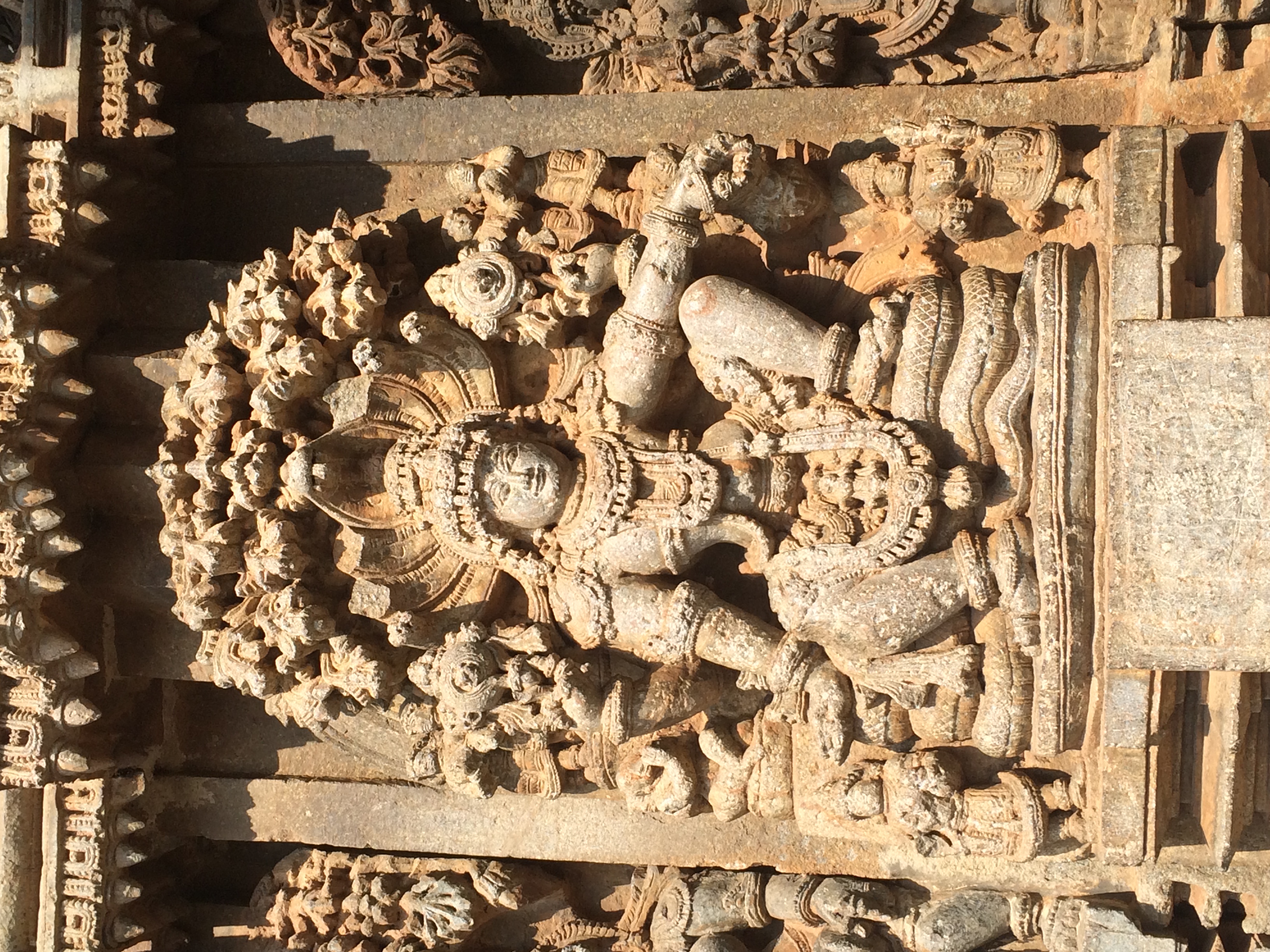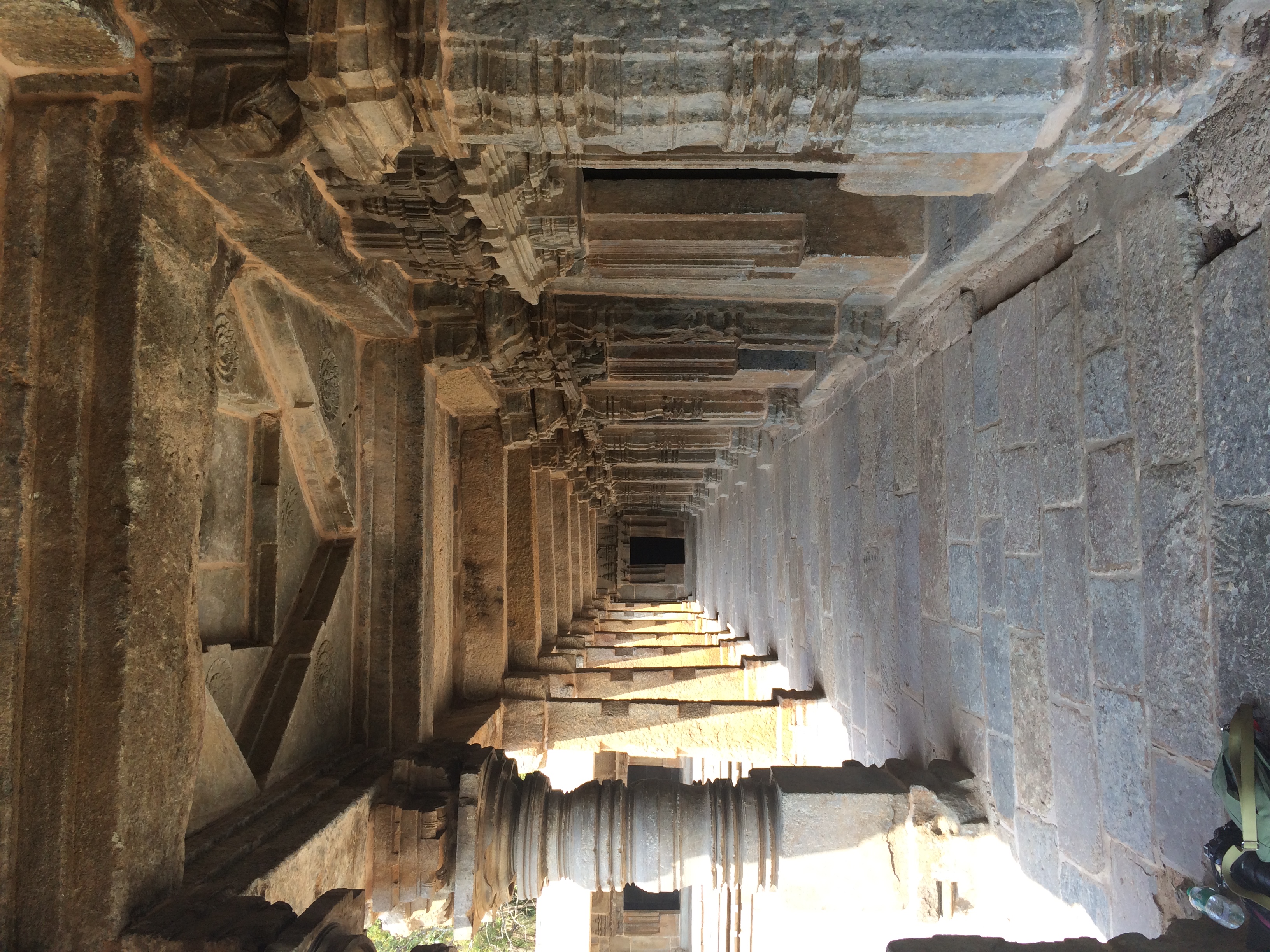Mysore, The perfumed Sandalwood City. The city of palaces.
General Information
Other Name:-District:MysoreState:KarnatakaCountry:IndiaArea:6269 Sq. Km.Language Spoken:Kannada, Tulu, Hindi and EnglishLong Distance Code:+91-821Importance:Famous for its Vrindavan gardens and the Dushhera celebrations.Best Time To Visit:October to March and -International Access:-Description:
Mysore city was the capital of the old royal Mysore province. The word Mysore expands to "Mahishasurana Ooru". According to a legend, the demon Mahishasura was killed by goddess Chamundeshwari atop the Chamundi hill near Mysore, which gave the city its name. Ever since, the Mysore royal family has worshipped Chamundeshwari as the palace deity. The Hill dedicated to her stands on the the eastern end of Mysore town today.
Mysore is the erstwhile capital of Wodeyars, the rulers of Mysore State. The Wodeyar family ruled Mysore since 14th century except for a short period of 40 years when Hyder Ali and Tipu Sultan were the rulers. Today Mysore is one of the major cities of Karnataka. Mysore has emerged as a thriving market for exotic sandalwood & incense, the Mysore silk sarees and stone-carved sculptures.Location:
Located 770m above sea level and 140 Km from Bangalore, Mysore, the imperial city, was the erstwhile capital of the Wodeyars, Also known as the city of Palaces.Climate:
Mysore has a semi-arid climate. The main seasons are summer from March to June, the monsoon season from July to November and winter from December to February. The highest temperature recorded in Mysore was 38.5 °C (101 °F) and the lowest was 7.7 °C (46 °F) on 16 January 2012. The city''''''''s average annual rainfall is 804.2 mm (31.7 in).
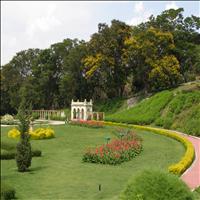 Built in 1924, this is India's first irrigation dam. Sir M. Vishweswariah, the engineer who designed and built this dam, has shown his acumen in converting a dam site into a beautiful garden with colourful fountains and ponds downstream. The dam is named after the then Maharaja of Mysore, Krishna raja Wodeyar, who financed this novel project. KRS represents a marvel of civil engineering achievement in pre-independence India and was among the first in the world to use automatic sluice gates. Locally available surkhi was used instead of importing cement from England.
Built in 1924, this is India's first irrigation dam. Sir M. Vishweswariah, the engineer who designed and built this dam, has shown his acumen in converting a dam site into a beautiful garden with colourful fountains and ponds downstream. The dam is named after the then Maharaja of Mysore, Krishna raja Wodeyar, who financed this novel project. KRS represents a marvel of civil engineering achievement in pre-independence India and was among the first in the world to use automatic sluice gates. Locally available surkhi was used instead of importing cement from England.Brindavan gardens is located 12 Km northwest of Mysore city and has rows-of colourful fountains. There is a boating pond to cross the dam from the south bank to the north bank and at the northern edge are the dancing fountains. Using advanced lighting techniques, the fountains are made to jump and dance to the tune of music. The dam is over 3 Km long and is constructed at the junction of three rivers - Kaveri, Hemavati and Lakshmanathirtha. This site has been popularised over the years by the large number of Indian/foreign films shot at this location.
Timings: 7.00 P.M. to 7.55 P.M. on weekdays.
7.00 P.M. to 8.55 P.M. on holidays.
During winter: 6.30 P.M. to 7.25 P.M. on weekdays.
6.30 P.M. to 8.25 P.M. on holidays.
Entrance fees: Rs.10/- per head.
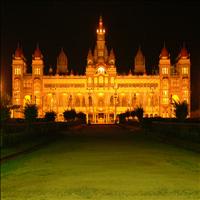 The palace was originally built of wood, which got burnt down in 1897 AD and was rebuilt in 1912 AD. The Mysore Palace, built is Indo-Saracenic style with domes turrets, arches and colonnades; the palace is a treasure house of exquisite carvings and works of art from all over the world. The tastefully decorated and intricately carved doors open into luxuriously decorated rooms.
The palace was originally built of wood, which got burnt down in 1897 AD and was rebuilt in 1912 AD. The Mysore Palace, built is Indo-Saracenic style with domes turrets, arches and colonnades; the palace is a treasure house of exquisite carvings and works of art from all over the world. The tastefully decorated and intricately carved doors open into luxuriously decorated rooms.The walls of the palace are painted with pictures of the Dassera processions and these paintings are painted in such a manner that from any angle you can see the procession coming towards you. The royal throne of the Wodeyars is displayed during the Dassera festival.
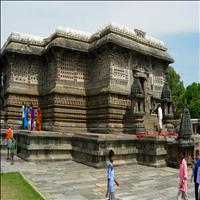 One of the three major Hoysala temples still in daily use today is the Channekeshava Temple of Belur. The construction of the temple, which took almost a century, was started in 1116 to commemorate the Hoysalas' victory over the Cholas. Enclosed in a paved compound, the temple complex includes a well and a bathing tank. It is believed that every major deity of the Hindu pantheon is represented in the temple.
One of the three major Hoysala temples still in daily use today is the Channekeshava Temple of Belur. The construction of the temple, which took almost a century, was started in 1116 to commemorate the Hoysalas' victory over the Cholas. Enclosed in a paved compound, the temple complex includes a well and a bathing tank. It is believed that every major deity of the Hindu pantheon is represented in the temple.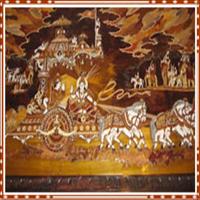 It is popularly known as Jaganmohan Palace. The Jaganmohan Palace was converted into an art gallery in the year 1875. It exhibits paintings, which date back to that period. The artists of that time used natural vegetable and mineral dyes. The famous traditional Mysore "Gold leaf" paintings are also exhibited in the gallery, as are oil paintings of contemporary artists like Raja Ravi Varma and Svetoslav Roerich.
It is popularly known as Jaganmohan Palace. The Jaganmohan Palace was converted into an art gallery in the year 1875. It exhibits paintings, which date back to that period. The artists of that time used natural vegetable and mineral dyes. The famous traditional Mysore "Gold leaf" paintings are also exhibited in the gallery, as are oil paintings of contemporary artists like Raja Ravi Varma and Svetoslav Roerich.It is just opposite to the City Bus-Stand and walk able distance from the KSRTS Bus-Stand or the Main Bus-Stand.
Apart from these, regular cultural programs are also arranged there.
Timings: 8.30 A.M. to 6.00 P.M.
Entrance Fee: Adults Rs.10/- and Children Rs.5/-
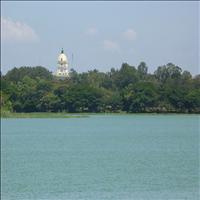 In the heart of Manasa Gangothri campus, situated a beautiful lake, which is frequently visited by bird watchers, water sport lovers and nature lovers. Varieties of migratory birds visit the lake during winter and to watch those birds is feast to the eyes. The lake is very near to the railway station and bus stand. Boating facilities are available on nominal rates.
In the heart of Manasa Gangothri campus, situated a beautiful lake, which is frequently visited by bird watchers, water sport lovers and nature lovers. Varieties of migratory birds visit the lake during winter and to watch those birds is feast to the eyes. The lake is very near to the railway station and bus stand. Boating facilities are available on nominal rates.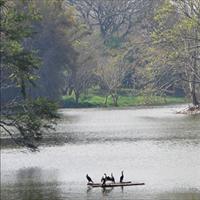 Lingabudi Lake, which is situated in Sriramapura, also accommodates varieties of migratory birds. There is also a beautiful park by the side of the lake. The whole place is full of green and it is another favorite place of nature lovers.
Lingabudi Lake, which is situated in Sriramapura, also accommodates varieties of migratory birds. There is also a beautiful park by the side of the lake. The whole place is full of green and it is another favorite place of nature lovers.It is about 8 Km from the city. Frequent buses are available from city bus stand.
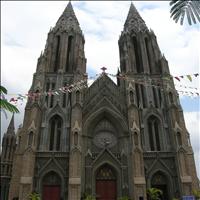 This beautiful Cathedral was built in 1956 and is one of the largest churches in the country. It has been built in the Gothic style with beautiful stain glass windows and lofty towers. The illuminated church in the evening is a wonderful site not to be missed.
This beautiful Cathedral was built in 1956 and is one of the largest churches in the country. It has been built in the Gothic style with beautiful stain glass windows and lofty towers. The illuminated church in the evening is a wonderful site not to be missed.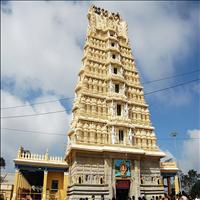 Forming the backdrop of the city is the 1,100-feet-high Chamundi Hill. On the top of the hill stands the temple dedicated to the Goddess Chamundeshwari, the royal family's patron deity. To reach the temple one can either drive through the 13-km stretch up to the summit or climb the 1,000 stone steps. Nearby the temple stands the huge statue of Mahishasura, the demon slain by the Goddess. Halfway up along the stone steps stands the majestic 4.8-metre monolith of Nandi the Bull, Lord Shiva's chosen mount. The statue is believed to be 300 years old and its chief attraction, apart from its size, is the meticulous craftsmanship of its ornaments-from its delicate anklets to the magnificent pendant bell around its neck.
Forming the backdrop of the city is the 1,100-feet-high Chamundi Hill. On the top of the hill stands the temple dedicated to the Goddess Chamundeshwari, the royal family's patron deity. To reach the temple one can either drive through the 13-km stretch up to the summit or climb the 1,000 stone steps. Nearby the temple stands the huge statue of Mahishasura, the demon slain by the Goddess. Halfway up along the stone steps stands the majestic 4.8-metre monolith of Nandi the Bull, Lord Shiva's chosen mount. The statue is believed to be 300 years old and its chief attraction, apart from its size, is the meticulous craftsmanship of its ornaments-from its delicate anklets to the magnificent pendant bell around its neck.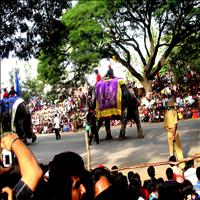 Mysore Dasara is the celebration of this victory of good over evil. Mysore also has associations with the Mahabharata and King Ashoka of the 3rd century B.C. during the Wodeyar rule Mysore reached the zenith of its glory as a fabled centre of oriental splendour.
Mysore Dasara is the celebration of this victory of good over evil. Mysore also has associations with the Mahabharata and King Ashoka of the 3rd century B.C. during the Wodeyar rule Mysore reached the zenith of its glory as a fabled centre of oriental splendour. Pomp and Pageantry Relived Come to Mysore in October when the tranquil city awakens to ten days of Dasara festivities. Brilliantly lit up Palaces, decorated arches, festooned streets, colourful costumes and cultural shows…classical music, folk dances, Bharata Natyam, Yakshagana, Huthari, Torch Light Parade, Theppotsava… The culmination is the legendary Mysore Dasara Procession with caparisoned elephants, the golden howdah, decorated horses, stately coaches, troops in ceremonial uniforms, folk dancers and colourful floats.
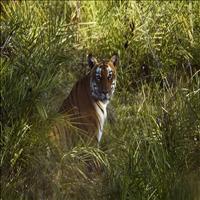 Bandipura is 80 Km southwest of Mysore, directly on the Mysore-Ooty road. It is a forest reserve created to protect the Royal Indian Tiger and has been one of the success stories for "Project Tiger." A forest lodge located at the heart of Bandipura on the Mysore-Ooty road, provides an excellent and quiet location for exploring this wonderful nature paradise.
Bandipura is 80 Km southwest of Mysore, directly on the Mysore-Ooty road. It is a forest reserve created to protect the Royal Indian Tiger and has been one of the success stories for "Project Tiger." A forest lodge located at the heart of Bandipura on the Mysore-Ooty road, provides an excellent and quiet location for exploring this wonderful nature paradise.Early morning, jeeps go out into the forest-taking tourists who want to catch a glimpse of the tiger. With luck, most of them will be able to see the Tiger, Elephant and other wild animals in their natural habitat. For late risers, there is an elephant ride through the forest, which is a pleasant experience. Deers, Langur monkeys, Peacocks; Wild dogs are often encountered on these adventure trips on the elephant's back.
The best seasons to visit Bandipura are the spring, post-monsoon, and autumn. During the summer months the forests dry up and water holes are scarce.
 The Somnathpur Temple, also referred to as Chennakeshava Temple, Keshava Temple is a Vaishnava Hindu temple on the banks of River Kaveri at Somanathapur, Karnataka. The temple was consecrated in 1258 CE by Somanatha Dandanayaka, a general of the Hoysala King Narasimha III. It is located 38 kilometres east of Mysuru city.
Somnathpur is a small village on the banks of the river Cauvery that was founded by the commander of the Hoyasala army, Somnath. The village is famous for its splendid and grand Keshava temple that has been built in the Hoyasala style. The temple is famous for its elaborate and intricate sculpturing. The temple is enclosed in a walled courtyard that has a gate and a porch. The temple is built on an elevated star shaped platform. The sides of the raised platform are decorated with richly carved friezes, portraying rows of cavalry, elephants and scenes from the epics. The rows above have sculptures of Gods mainly Vishnu in various forms. The shrine has three shrines and three sanctums. The temple has three intricately carved pinnacles and a common Navranga. The northern sanctum has the idol of Lord Janardhana and the southern sanctum has the idol of Lord Venugopala. The main hall has exquisitely turned pillars and ceiling panels. The image of Lord Keshava that once adorned the main hall is missing today.The temple is an example of the grand and glorious temples built by the Hoysala rulers. The names of the sculptors are inscribed on their works, which was a common practice during the reign of the Hoysalas. This temple is as beautiful as the world-renowned Belur and Halebid temples and is worth visiting while is Mysore.
The ornate temple is a model illustration of the Hoysala architecture. The temple is enclosed in a courtyard with a pillared corridor of small shrines (damaged). The main temple in the center is on a high star-shaped platform with three symmetrical sanctums.
The Kesava temple too was badly damaged, according to 15th-century inscriptions. It was repaired in the 16th century with financial support and grants by the emperors of the Vijayanagara Empire. The repairs are evidenced by the different color of stones and quality of work in the veranda and parts of the northern tower and platform of the main temple. The repaired temple was damaged in the 19th century, then repaired again in the early 20th century by the colonial era Mysore government.
The Kesava temple is one of some 1,500 Hindu and Jain temples built by the Hoysala Empire kings in different parts of their kingdom. The other well studied Hoysala temples include those at Belur and Halebidu.
The Somnathpur Temple, also referred to as Chennakeshava Temple, Keshava Temple is a Vaishnava Hindu temple on the banks of River Kaveri at Somanathapur, Karnataka. The temple was consecrated in 1258 CE by Somanatha Dandanayaka, a general of the Hoysala King Narasimha III. It is located 38 kilometres east of Mysuru city.
Somnathpur is a small village on the banks of the river Cauvery that was founded by the commander of the Hoyasala army, Somnath. The village is famous for its splendid and grand Keshava temple that has been built in the Hoyasala style. The temple is famous for its elaborate and intricate sculpturing. The temple is enclosed in a walled courtyard that has a gate and a porch. The temple is built on an elevated star shaped platform. The sides of the raised platform are decorated with richly carved friezes, portraying rows of cavalry, elephants and scenes from the epics. The rows above have sculptures of Gods mainly Vishnu in various forms. The shrine has three shrines and three sanctums. The temple has three intricately carved pinnacles and a common Navranga. The northern sanctum has the idol of Lord Janardhana and the southern sanctum has the idol of Lord Venugopala. The main hall has exquisitely turned pillars and ceiling panels. The image of Lord Keshava that once adorned the main hall is missing today.The temple is an example of the grand and glorious temples built by the Hoysala rulers. The names of the sculptors are inscribed on their works, which was a common practice during the reign of the Hoysalas. This temple is as beautiful as the world-renowned Belur and Halebid temples and is worth visiting while is Mysore.
The ornate temple is a model illustration of the Hoysala architecture. The temple is enclosed in a courtyard with a pillared corridor of small shrines (damaged). The main temple in the center is on a high star-shaped platform with three symmetrical sanctums.
The Kesava temple too was badly damaged, according to 15th-century inscriptions. It was repaired in the 16th century with financial support and grants by the emperors of the Vijayanagara Empire. The repairs are evidenced by the different color of stones and quality of work in the veranda and parts of the northern tower and platform of the main temple. The repaired temple was damaged in the 19th century, then repaired again in the early 20th century by the colonial era Mysore government.
The Kesava temple is one of some 1,500 Hindu and Jain temples built by the Hoysala Empire kings in different parts of their kingdom. The other well studied Hoysala temples include those at Belur and Halebidu.Timings: Sun rise to Sun set
Remarks: No photography allowed inside the temple


